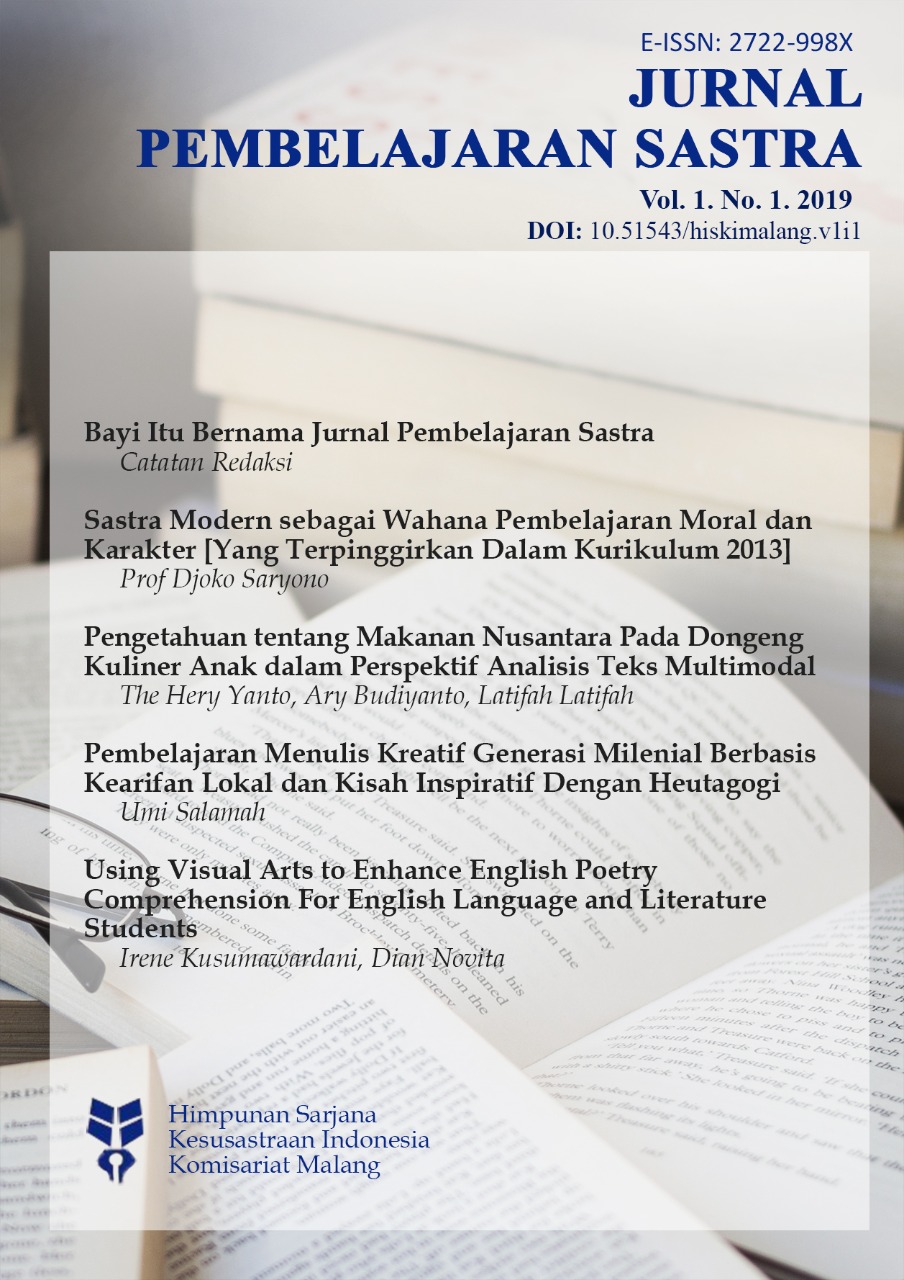USING VISUAL ARTS TO ENHANCE ENGLISH POETRY COMPREHENSION FOR ENGLISH LANGUAGE AND LITERATURE STUDENTS
##plugins.themes.academic_pro.article.main##
Abstract
Poetry as a genre of literature is required subject for students of English Language and Literature in Higher Education in general. However, compared to other genres such as drama and prose, poetry is often found as the most challenging subject to teach and to learn. Even though English poetry has been taught in many non-native countries for many years, traditional approach which is textual has dominated the teaching of poetry in classroom. Based on the experience and knowledge, the writers found that the problem of learning English poetry for foreign language students is due to its complex language and infamous interest amongst the students as well as the teachers. Therefore, the teaching of poetry should enliven the learning atmosphere and envision the figure of speech of the poem, which are commonly found to be difficult to be done by the students. According to D.H. Kehl, there is somehow interconnection between poetry and visual arts. Poetry and visual arts have almost the same characteristic in conveying arts. Poetry use verbal imagery while painting use visual imagery. Considering the existing connection of the two aspects, this library research study proposes the use of visual arts in order to enhance students’ comprehension of poetry given in classroom.
##plugins.themes.academic_pro.article.details##

This work is licensed under a Creative Commons Attribution-NonCommercial-NoDerivatives 4.0 International License.
The Authors submitting a manuscript do so on the understanding that if accepted for publication, copyright of the article shall be assigned to Jurnal Pembelajaran Sastra (Journal of Literary Education) as publisher of the journal, and the author also holds the copyright without restriction.
Copyright encompasses exclusive rights to reproduce and deliver the article in all form and media, including reprints, photographs, microfilms and any other similar reproductions, as well as translations. The reproduction of any part of this journal, its storage in databases and its transmission by any form or media, such as electronic, electrostatic and mechanical copies, photocopies, recordings, magnetic media, etc. , are allowed with a written permission from Jurnal Pembelajaran Sastra (Journal of Literary Education).
Jurnal Pembelajaran Sastra (Journal of Literary Education), the Editors and the Advisory International Editorial Board make every effort to ensure that no wrong or misleading data, opinions or statements be published in the journal. In any way, the contents of the articles and advertisements published in the Jurnal Pembelajaran Sastra (Journal of Literary Education) are sole and exclusive responsibility of their respective authors and advertisers.

